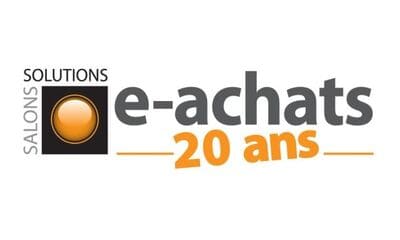For his 20Th edition, the Salon Solutions e-Achats confirmed the strategic place now occupied by purchasing. At the center of an ecosystem of internal and external partners, they have been contributing for several years to the operational performance and financial results of the company, with the support of ever more powerful digital solutions.
Corporate social responsibility, risks, electronic invoicing. According to the interventions during the workshops and conferences, but also the communication of the publishers present, the 2021 edition of the E-Buy Solutions Lounge, which was held on 5 and 6 October in Paris, could be summed up in these three themes. Social responsibility, first of all, because of the current climate issues, and the place that the subject will occupy in the campaign for the presidential election next spring. Risks, then, with the awareness triggered by the impacts (delay in delivery, increase in prices, shortage of products, etc.) of the crisis related to the Covid-19 pandemic. Finally, electronic invoicing, following the recent announcement of a generalization from 2024 for French companies.
But rather than decipher this triple trend, the organizers of the inaugural round table had chosen another angle, more positive perhaps, in any case of circumstances while the show was blowing its 20Th Candle: How procurement has transformed its practices in two decades alongside the rise of dedicated tools. "The market for digital purchasing solutions began to structure itself at the end of the 90s, when the American leader has launched the concept of a marketplace," said Gérard Dahan, the new CEO of one of the leading specialist publishers. But the real start finally came with the idea of a "procurement" solution associated with a network of suppliers, a kind of private marketplace, and the appearance of Spend management, e-Sourcing, e-Procurement features. This evolution has logically contributed to the rise of the function, which has become an essential contributor to the company's performance.
Sharing this analysis, David Luby, Purchasing Director of Infopro Digital immediately made a point of specifying that the issues themselves had changed a lot in recent years. “While the search for savings remains one of the primary objectives, the solutions have been strengthened in terms of risk analysis and control, consideration of social responsibility, and exchanges with all the players in the ecosystem. “, he recalled, insisting on the fact that the function has thus risen to the top of the organizational charts. For Laurent Guillot, Managing Director of another market publisher, "purchasing, initially confined to optimizing the supply chain, was replaced in the early 2000s at the center of the company, as the pivot of an ecosystem including general management, related functions (logistics, finance, legal, quality, etc.), businesses and suppliers”. But also the solution publishers, continued Laurent Jeanmaire, director of the consulting division at one of them: “If they are only a support, the tools and the publishers play an important role for accompany the rise in maturity of the function".
In this movement, projects have also been transformed, said Driss Rachdi, R&D and innovation director of the fourth publisher present, explaining that "they have switched from the digitalization of the transactional supply chain to the purchasing business", which would no longer be there only for sourcing, consultations, negotiation, contracting. "Buyers now have a crucial role with suppliers, in a more direct relationship to solve the problems and costs of non-compliance," he insisted. While "supplier quality" is becoming a key priority, mastering the standard is of critical importance "in terms of available information, but also qualification, evaluation, etc.", explained Christophe Stary, Deputy Director of Information Systems at Fives. "The tools must also facilitate the flow of this information, like all others, in a relevant and efficient way," according to David Luby. Especially since, as Laurent Guillot concluded, "only 5% of the users of our solutions are buyers".

